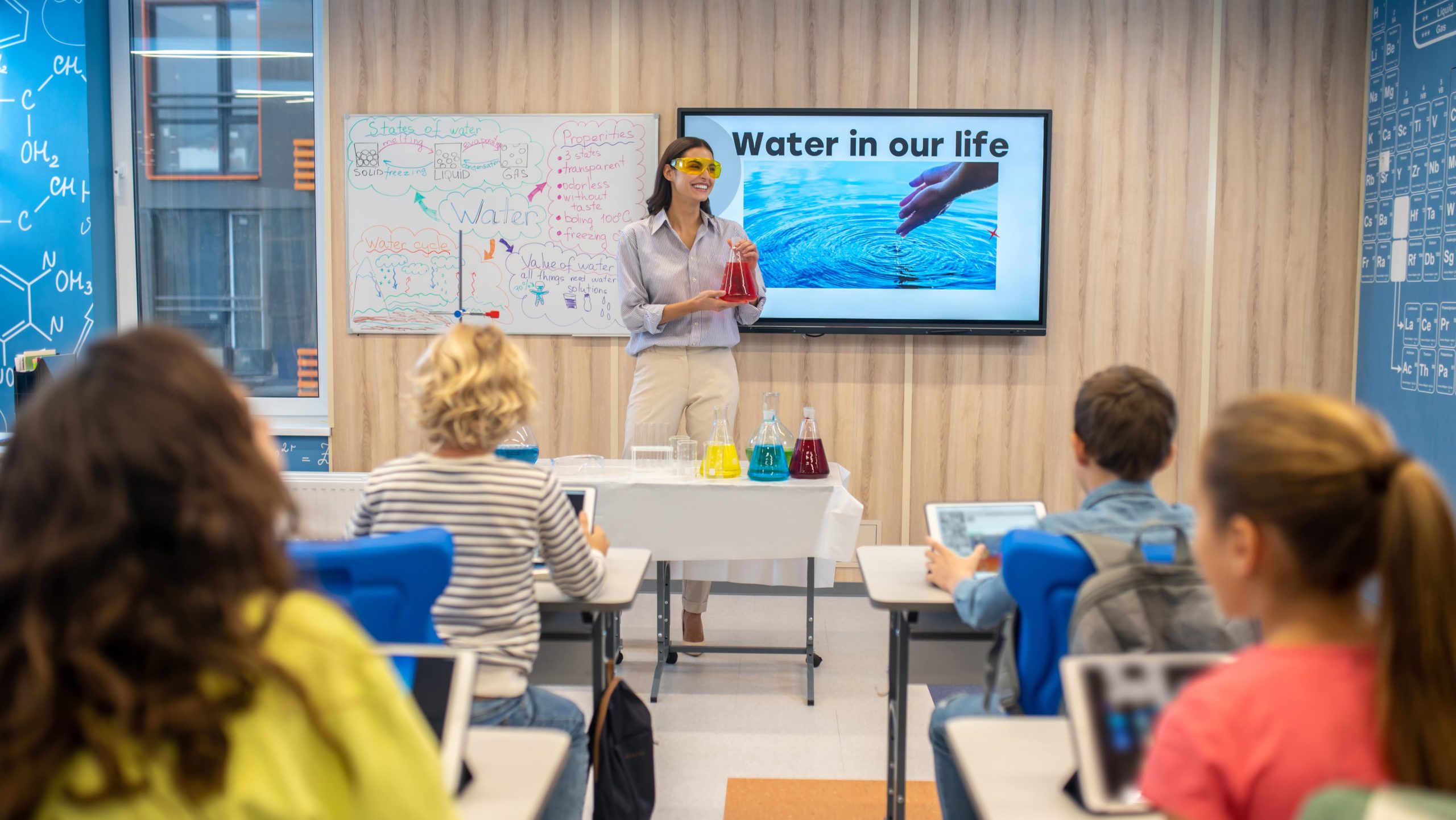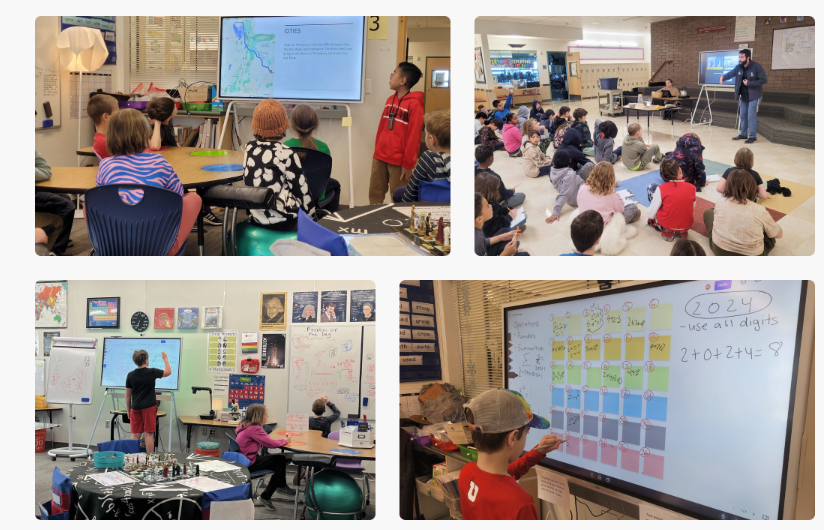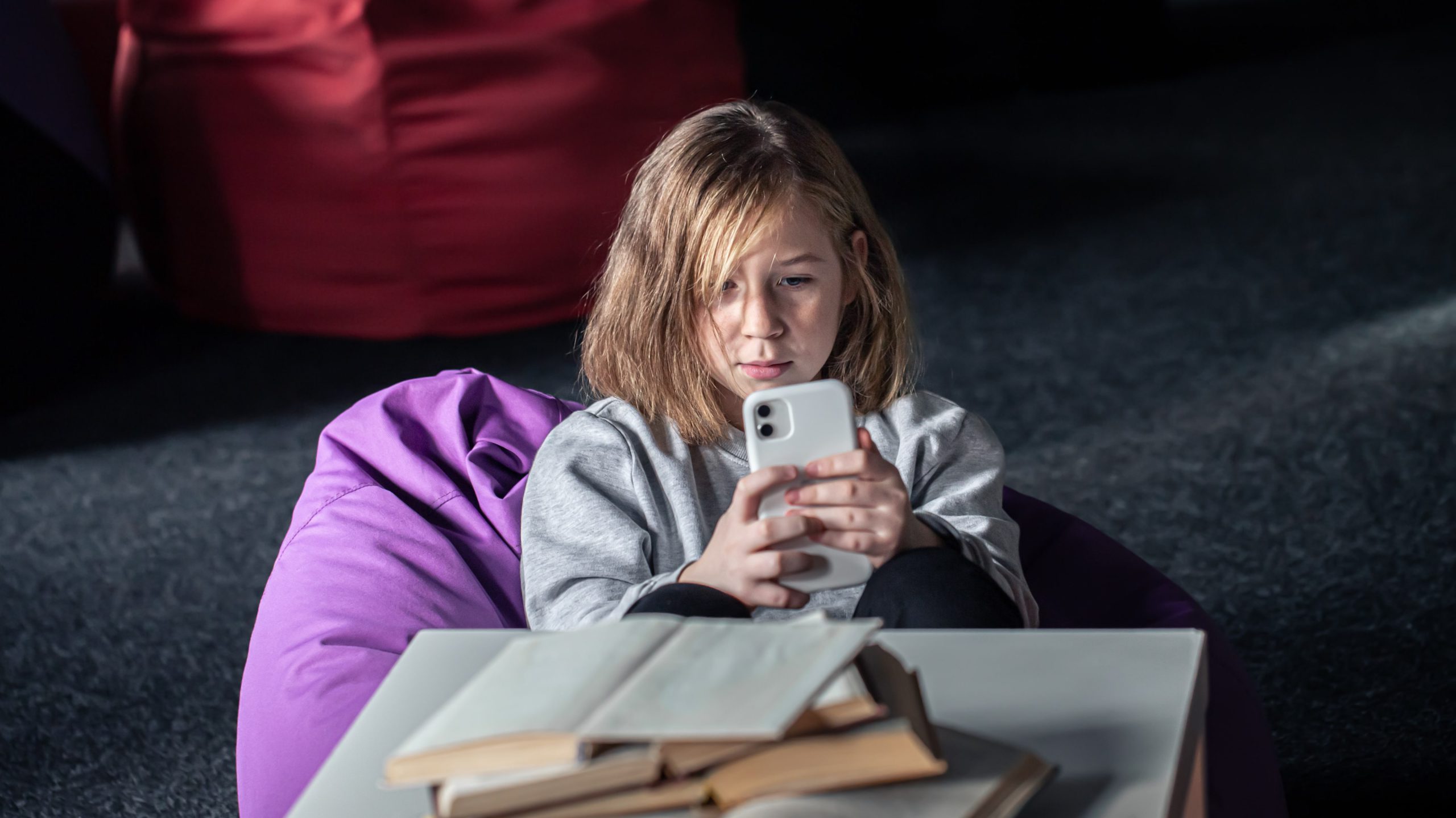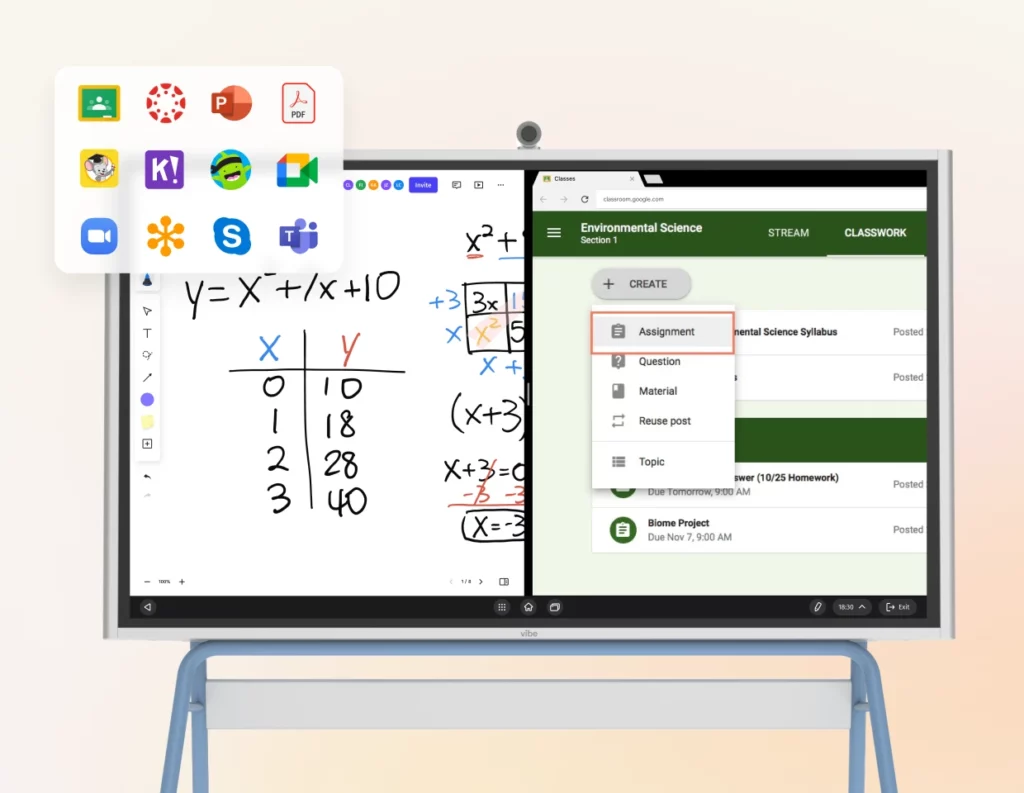We’ve all been there — staring across a classroom at a chalkboard while a teacher lectures from the front of the room, frantically taking notes with pencil and paper, just as students have done for centuries. But walk into a modern classroom today, and you’ll find a dramatically different scene: smart boards, tablets in students’ hands, and lessons delivered through engaging digital platforms.
The transformation is unmistakable. Technology has profoundly changed education, revolutionizing and improving how teachers teach and students learn. What was once a one-way transfer of information has evolved into an interactive, personalized experience that breaks down the walls of traditional classrooms and opens up new possibilities for learning.
How Has Technology Changed Education?
At first glance, some classrooms might look similar to those from decades past, with students still sitting in rows, teachers guiding lessons, and learning still happening. But look closer, and you’ll see the profound transformation technology has brought to education and learning retention.
Modern education is no longer confined to physical textbooks or classroom walls. Students have access to vast information instantly, collaborate with peers in hybrid classrooms, and engage with content through interactive platforms that adapt to their learning styles. Meanwhile, teachers have evolved from being the sole source of knowledge to becoming guides who facilitate personalized learning journeys, connecting learning with educational sources across the world and the internet.

What is Educational Technology?
Educational technology (EdTech) encompasses the tools, platforms, and digital resources designed specifically to improve teaching and learning experiences. EdTech looks to go beyond just upgrading classrooms with technology to fundamentally reimagining how education can be approached with strategies like SAMR.
Modern EdTech includes:
-
Interactive whiteboards that replace traditional dry erase boards, static TVs, and projectors
-
Learning management systems that organize curriculum and track progress
-
Adaptive learning platforms that personalize content based on student performance
-
Video conferencing platforms that enable hybrid classrooms
-
Collaboration tools that connect classrooms globally
-
AI-powered applications that provide instant feedback and support
Educational technology is focused on actively engaging students in their learning experience and providing immediate feedback. These strategies meet students where they are and use technology to adapt to individual student learning needs.
The Historical Development of Technology in Education
The evolution of technology in education didn’t happen overnight. It’s been a gradual progression that’s accelerated dramatically in recent years:
-
Mid-1800s to 1900s: Chalkboards and pencils revolutionized group instruction, allowing teachers to present information to entire classes simultaneously.
-
1950s-1960s: Overhead projectors and photocopiers entered schools, making information sharing more efficient.
-
1970s-1980s: Calculators and early desktop computers introduced computational tools and basic educational software.
-
1990s-2000s: Internet access transformed research capabilities, while email facilitated communication between teachers, students, and parents.
-
2010s: Tablets and one-to-one device programs made digital learning portable and personalized.
-
2020s: AI-powered adaptive learning, cloud-based collaboration, and remote learning capabilities became mainstream, found in all-in-one platforms, and accelerated by the global pandemic.
 Four images showing Vibe interactive whiteboard integration in classrooms enhancing student engagement through collaborative learning activities and digital interaction.
Four images showing Vibe interactive whiteboard integration in classrooms enhancing student engagement through collaborative learning activities and digital interaction.Each technological advancement has built upon previous innovations, creating increasingly sophisticated learning environments that would have been unimaginable to educators just a generation ago.
How Technology Has Improved Teaching
For teachers, technology has been nothing short of transformative. Gone are the days when educators spent hours manually grading papers and planning lessons from scratch. Today’s digital tools handle these time-consuming tasks automatically, freeing teachers to do what they do best: connect with students.
In modern classrooms, teachers receive instant analytics showing exactly which concepts students are mastering and where they’re struggling. With this real-time feedback, cited by 81% of experienced educators as technology’s biggest positive impact, teachers can adjust their instruction immediately, ensuring no student falls behind. The educator’s toolkit has expanded dramatically as well. Biology teachers use interactive 3D models to illustrate complex systems, while language instructors connect their students with native speakers across the globe via video conferencing. These digital resources engage diverse learning styles in ways traditional textbooks never could.
Impact on Student Learning and Retention
For students, technology has revolutionized how they access, engage with, and retain information. New interactive content transforms passive listeners into active participants, significantly increasing attention and motivation in the learning process.
Today’s adaptive platforms automatically adjust difficulty levels and content types based on individual performance data, ensuring each student works within their optimal challenge zone. This personalization, combined with digital tools that provide instant assessment results, allows students to correct misconceptions immediately rather than reinforcing errors.
The collaborative dimension of educational technology has proven equally valuable. Digital whiteboards and workspaces enable students to work together on projects regardless of physical location, developing the teamwork skills essential for future success. Meanwhile, multimodal learning experiences engage multiple senses through combinations of text, audio, video, and interactive elements, accommodating diverse learning preferences and improving information retention. The digital transformation has made learning more accessible, engaging, and effective for students across all ability levels.
How Has Technology Changed Education Positively?
The benefits of educational technology extend far beyond convenience, fundamentally transforming what’s possible in teaching and learning:
-
Unprecedented access to information: Students today have instant access to more information than entire libraries could hold in previous generations. This democratization of knowledge has leveled the playing field, giving students from all backgrounds access to high-quality educational resources.
-
Global classroom connections: Technology has eliminated geographical barriers, allowing students to collaborate with peers worldwide and gain exposure to diverse perspectives and cultures. Virtual field trips and expert connections bring real-world experiences directly into the classroom.
-
Personalized learning experiences: Perhaps the most significant advantage is the ability to tailor education to individual needs. Adaptive learning platforms can adjust content difficulty, pacing, and presentation style based on each student’s performance, ensuring everyone is appropriately challenged.
-
Enhanced engagement through interactivity: Digital tools transform passive learning into active exploration. Interactive whiteboards for classrooms, simulations, educational games, and multimedia presentations capture attention and make complex concepts more accessible and memorable.
-
Improved accessibility for diverse learners: Technology offers powerful supports for students with disabilities, from text-to-speech for visually impaired learners to specialized apps for students with learning differences. These tools help create truly inclusive classrooms.
-
Real-time feedback and assessment: Digital assessment tools provide immediate results, allowing teachers and students to identify and address misconceptions quickly. This rapid feedback loop accelerates learning and prevents the reinforcement of errors.
-
Development of digital literacy skills: By integrating technology into education, schools prepare students for workplaces where digital fluency is essential. Students develop not just subject knowledge but also the technological competencies needed for future success.
How Has Technology Changed Education Negatively?
Despite its many benefits, the integration of technology in education isn’t without challenges and potential downsides:
-
Digital distraction concerns: With devices comes the potential for distraction. Approximately 70% of educators worry that technology diverts student attention away from learning objectives, making classroom management more complex.
-
Technological dependence: Over-reliance on technology can potentially undermine the development of fundamental skills like mental math, handwriting, and face-to-face communication. A majority of teachers express concerns about students becoming too dependent on digital tools.
-
Implementation challenges: Many schools face significant hurdles in effectively implementing educational technology, including inadequate infrastructure, insufficient teacher training, and the rapid pace of technological change that can make investments quickly obsolete.
-
Digital equity issues: Not all students have equal access to technology outside school hours, creating a "homework gap" that can exacerbate existing educational inequalities. This digital divide became particularly apparent during pandemic-related remote learning.
-
Privacy and security concerns: The collection of student data raises important questions about privacy protections and the appropriate use of information. Schools must navigate complex ethical considerations around student data security.
-
Screen time health impacts: Extended device use raises concerns about physical health effects, including eye strain, sedentary behavior, and potential sleep disruption from blue light exposure.
-
Plagiarism and academic integrity: Digital tools make copying and sharing work easier than ever. Teachers report plagiarism as one of their top concerns regarding technology use, particularly with the rise of generative AI.

Bring Innovation to Your Classroom with Vibe Board S1
The modern classroom demands technology that enhances learning without creating new problems. The Vibe Board S1 delivers on this promise with features specifically designed to maximize educational benefits while minimizing common technology frustrations.
Boasting a 55-inch 4K UHD touchscreen, the Vibe Board transforms passive learning into active participation. Multiple students can work simultaneously on an infinite canvas, fostering the collaborative skills we’ve identified as crucial for today’s learners. This multi-touch functionality encourages participants to engage directly with learning materials. Seamless integration with over 250 applications, including Google Classroom and Microsoft 365, supports the personalized learning paths that research shows improve student outcomes. Cloud storage ensures lesson materials are never lost and can be accessed anytime, addressing the equity issues that can arise when students miss class. All of these features make the Vibe Board an easy-to-use, intuitive platform that is simple for both students and teachers to adopt and implement in educational settings, combating typical technology frustrations.
 Vibe Board displaying split screen function with two apps running side by side.
Vibe Board displaying split screen function with two apps running side by side.Ready to bring technology innovation to your classroom? The Vibe Board S1 offers the perfect balance of interactive technology and practical teaching tools for today’s digital learning environment.







-1sbltxxq4FYxHrXrwJVLsCDNsXpqNa.webp)
-5Zp0pmSytvcuYDVs1LvuwplKuRneK0.webp)
